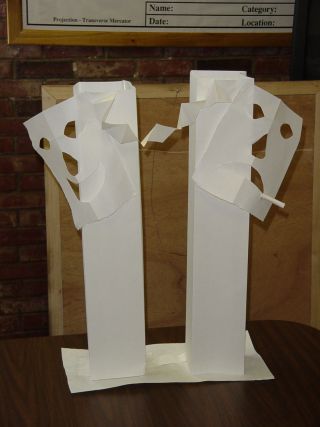
Identity
Making Something Out of Nothing
How art can reestablish self-identity for prison inmates, and why bother?
Posted November 5, 2013
“The statement ‘I am an artist’ is a powerful counterweight to the negative associations of ‘I am a criminal’ or ‘I am a prisoner.’” Thompson, 2003.
Jimmy, a 45-year-old inmate—who looked ten years older—was in prison for vehicular manslaughter. He had been in prison for several years before he was sent to the mental health unit for suicidal thoughts. It soon became clear that since imprisoned he had been taken advantage of by other inmates and ignored by the prison staff. He soon tended to “blend into the background” to avoid drawing negative attention. Eventually he lost all sense of self. He was placed in the art therapy group as he rarely engaged with the other mental health staff. 

Jimmy, a 45-year-old inmate—who looked ten years older—was in prison for vehicular manslaughter. He had been in prison for several years before he was sent to the mental health unit for suicidal thoughts. It soon became clear that since imprisoned he had been taken advantage of by other inmates and ignored by the prison staff. He soon tended to “blend into the background” to avoid drawing negative attention. Eventually he lost all sense of self. He was placed in the art therapy group as he rarely engaged with the other mental health staff.
While the group members were hesitant at first, they became engaged. They soon realized that despite the same, limiting materials, all of the end products were considerably different.
Jimmy was proud to point out his unique form. Everyone was. By doing so, the members were reinforcing through a positive expression, their own unique identity, one that had eroded during their time in prison (Gussak, 1997).

One of the ways prisons control their populations is by objectifying the inmates—its easier to control those who are seen as inferior or subhuman (Fox, 1997). Essentially, they are stripped of their identity, labeled with numbers, required to all wear the same clothes. They are seen as nothing, and they will remain so. I must confess, I can see how this might seem a valuable tool for security. However, such dynamics are detrimental to change and mental health, and can stand in the way of true rehabilitation. What eventually emerges is a person who either rebels against such treatment, becomes violent, aggressive, manipulative, or he develops a sense of apathy and distance. He either becomes withdrawn and asocial, or develops sociopathic tendencies.
Telling an inmate that he is not merely a “prisoner” but an individual with distinct and separate identities and issues can’t challenge such dynamics; he needs to engage in positive experiences that demonstrate this—experiences that reinforce his distinctiveness and individuality without making it obvious. This will make it less likely for the inmate to rebel against participating. Imagine telling an inmate, hardened by the system, that he has lost his identity, his sense of individuation? What is more, the sub-culture, so embroiled in the dynamics created, perpetuates the self-defacing cycle. If a male inmate tries to succeed within the system, other inmates may beat him down. (This is quite different from a women’s prison, which will be addressed in a future post). Artmaking belies this tendency; those that can create have a worthy commodity, a recognized and enviable skill. If their art is accepted, they are accepted. The art therapist can take advantage of this, and use the art to reestablish an identity above that of ‘inmate.’ "The arts in prison seem a way of making people 'worthy of consideration'" (Brown, 131).

The question remains, however, are prisoners (let alone their artwork) worthy of consideration?
Art making allows prisoners to re-define themselves. As one inmate stated, "I still have something to contribute.” To ultimately cause a positive transformation or change, the inmates first and foremost can benefit from art by using it to "remain human in an inhuman environment" (Brown, 2002, p. 28).
As Brown (2002) indicated, when citing Great Britain’s Prison Service Statement of Purpose, prison can serve offenders by "help[ing] them to live law abiding and useful lives in custody, and after release" (p. 26). As a therapist in prison, one of my roles was to assist the inmate in rising above the detrimental labels imposed on him, and to eventually succeed the system by developing a distinct and unique identity capable of thriving independently.
Brown, M. (2002). Inside Art. Winchester, UK: Waterside Press
Fox, W. M. (1997). The hidden weapon: Psychodynamics of forensic institutions. In D. Gussak & E. Virshup (Eds.), Drawing time: Art therapy in prisons and other correctional settings (pp. 43-55). Chicago, IL: Magnolia Street Publishers.
Gussak, D. (1997). The ultimate hidden weapon: Art therapy and the compromise option In D. Gussak & E. Virshup (Eds.), Drawing time: Art therapy in prisons and other correctional settings (pp. 59-74). Chicago, IL: Magnolia Street Publishers.
Thompson, J. (2003). Doubtful principles in arts in prison (pp.40-61). In R. M. Crane Williams (ed.) Teaching the Arts Behind Bars. Boston, MA: Northeastern University

